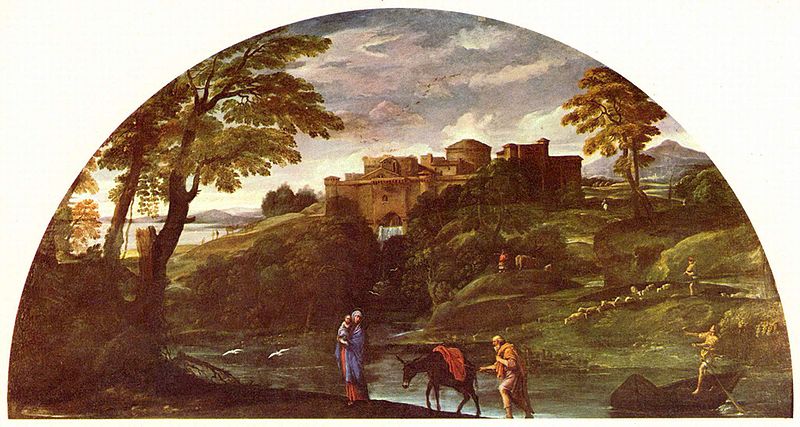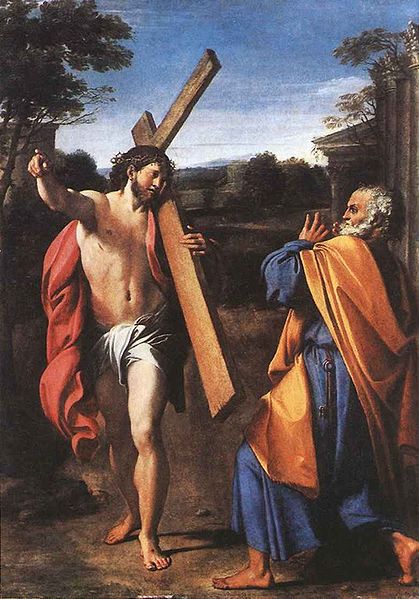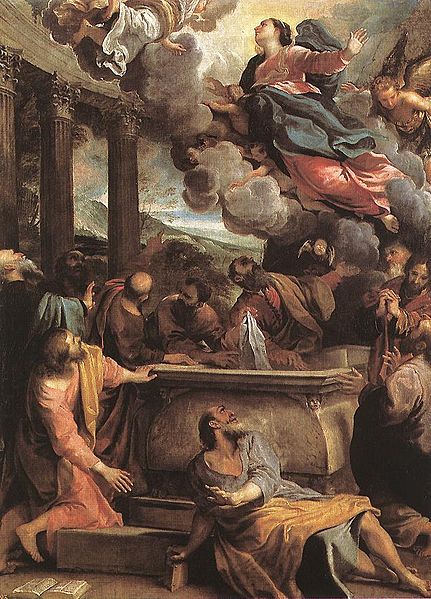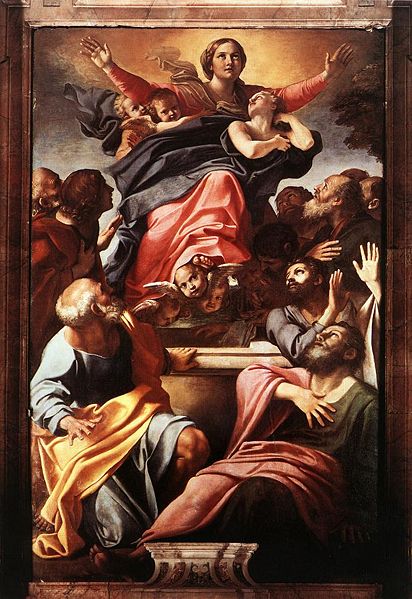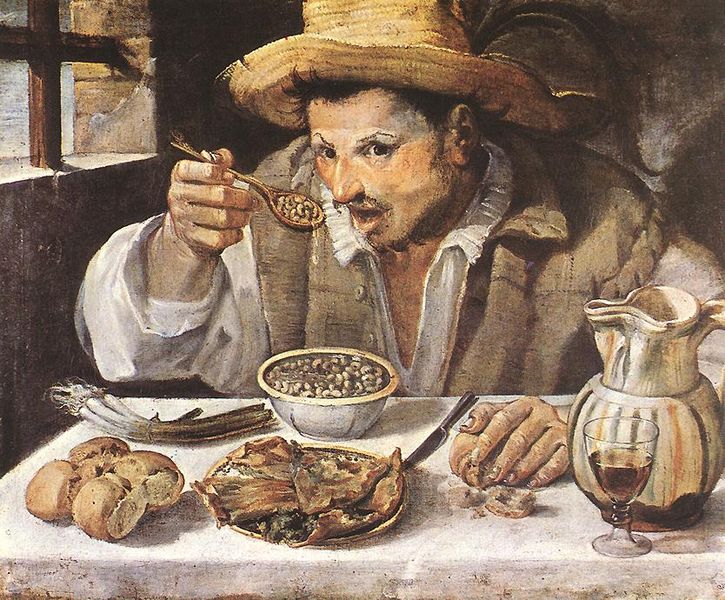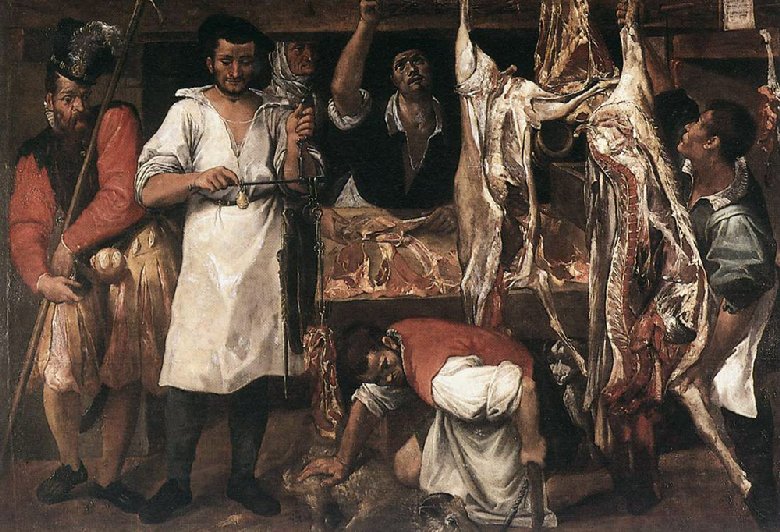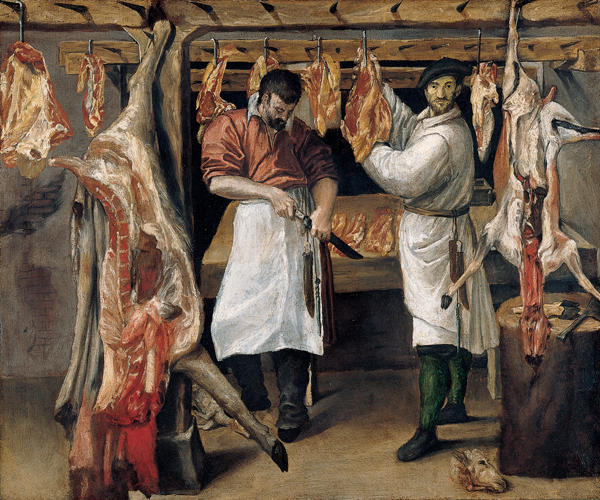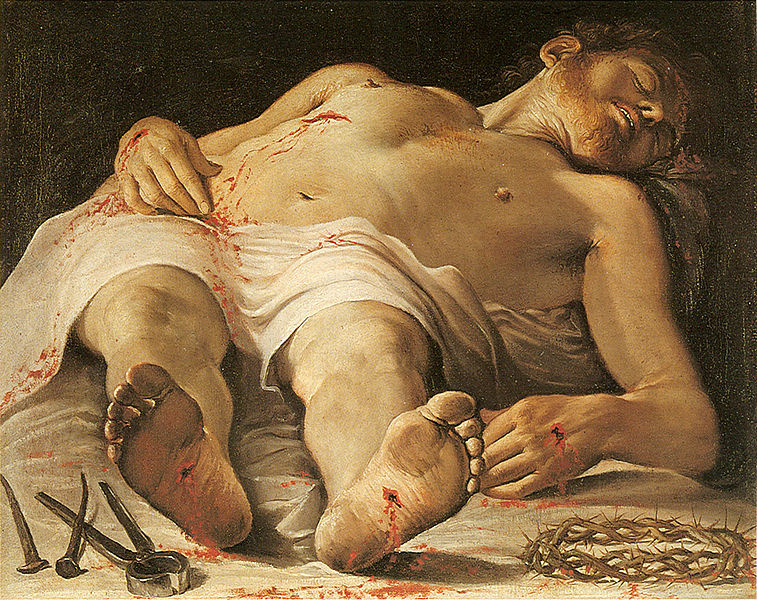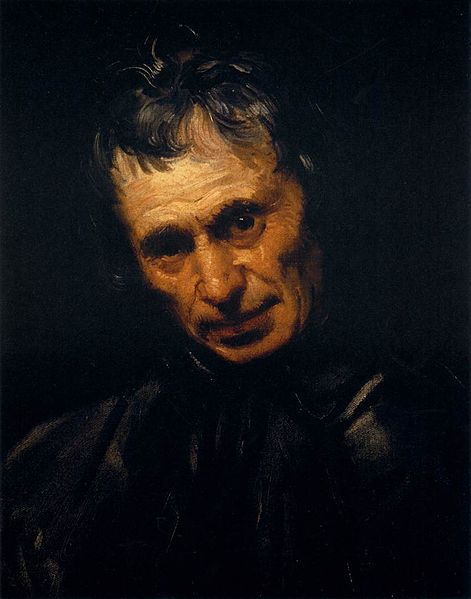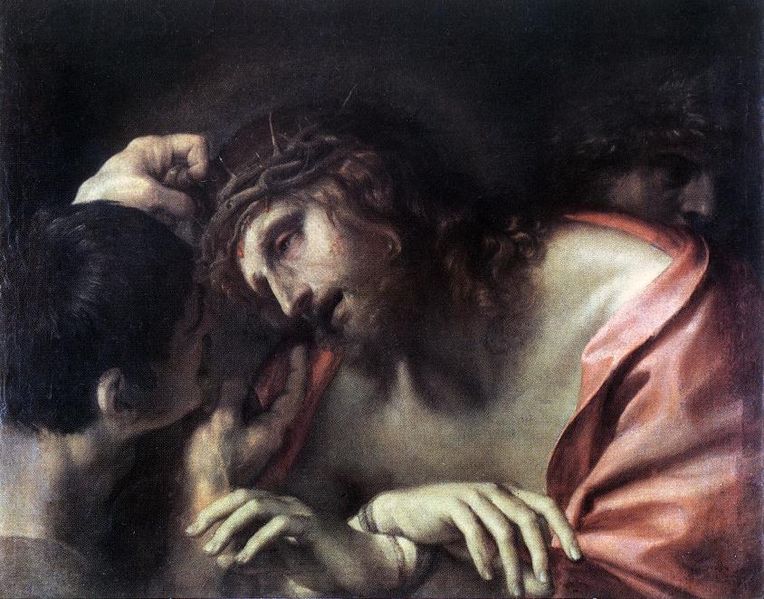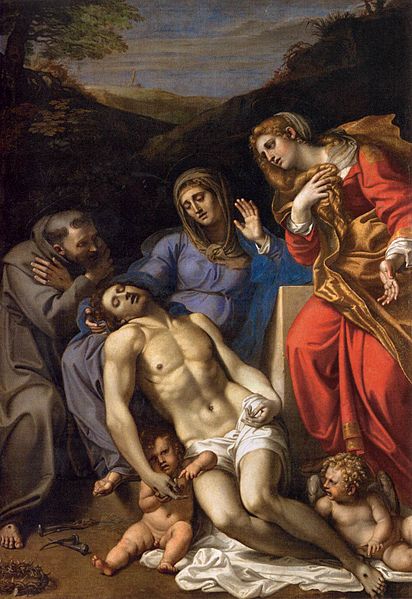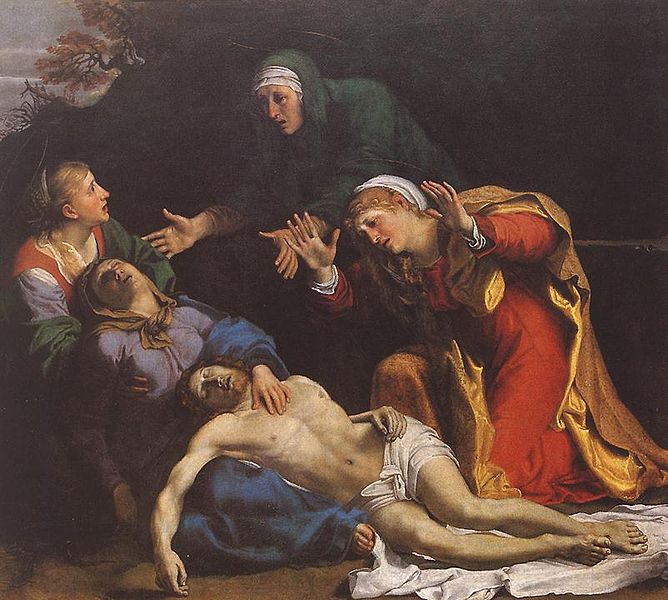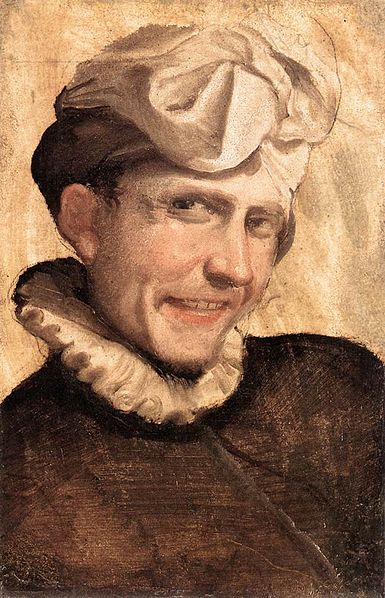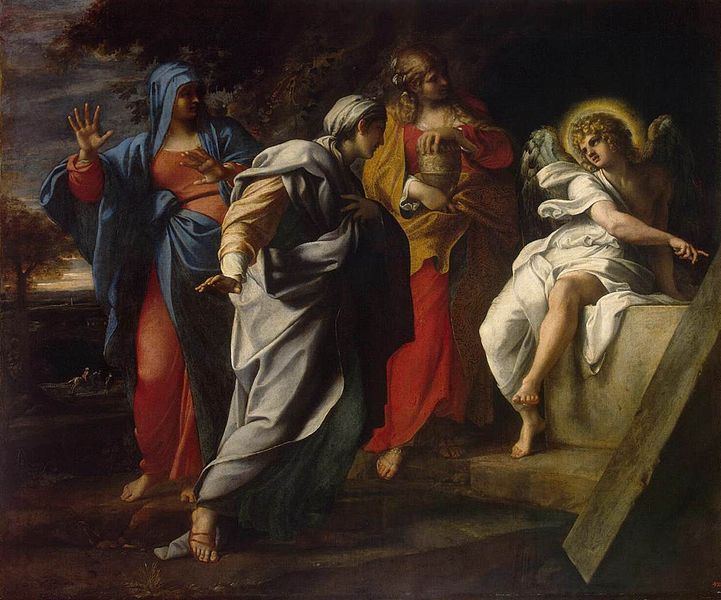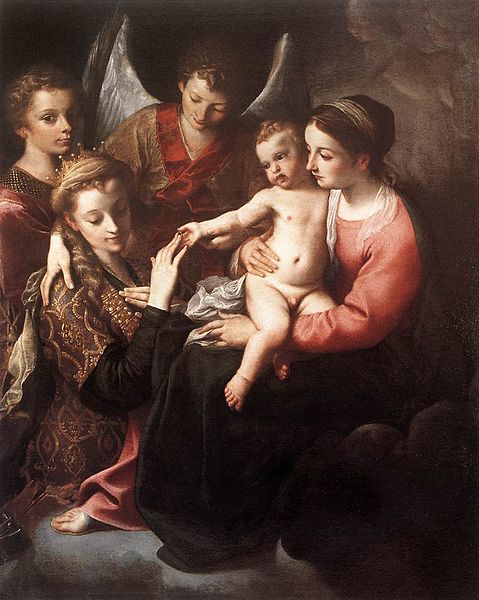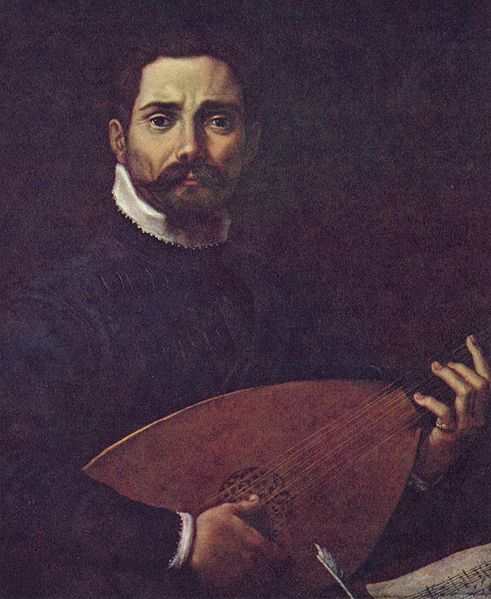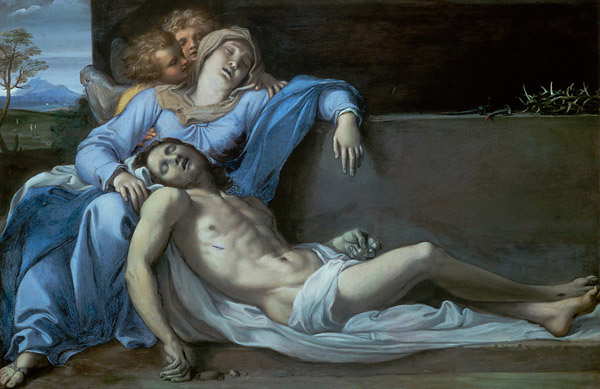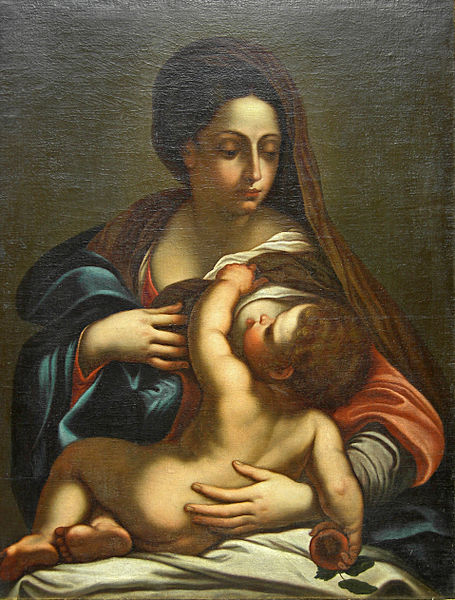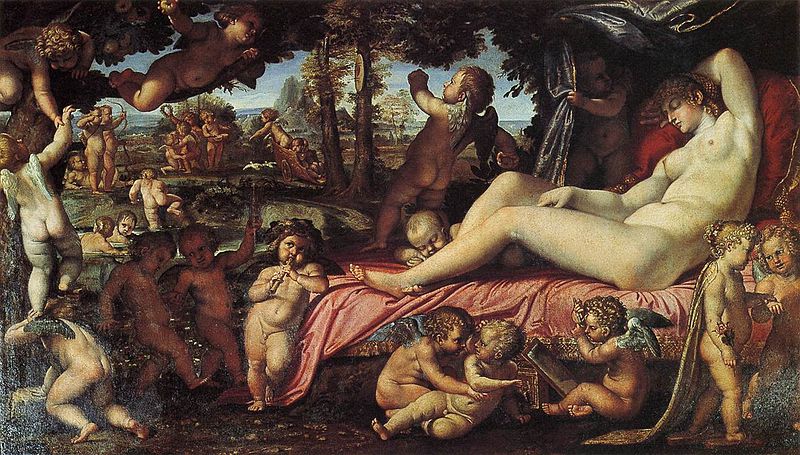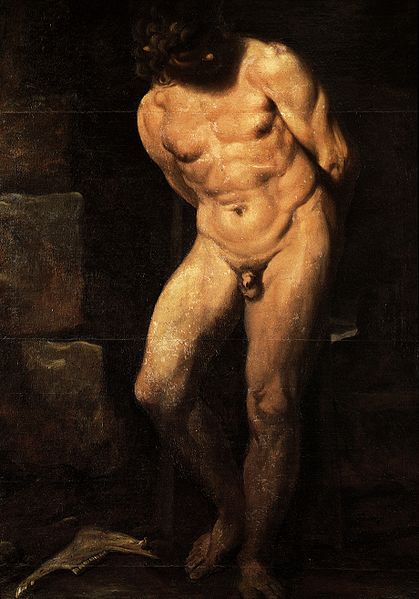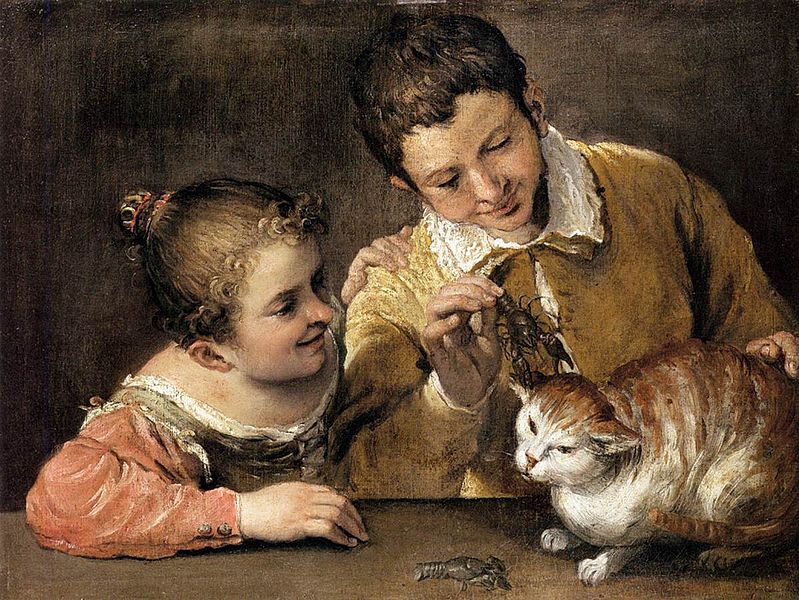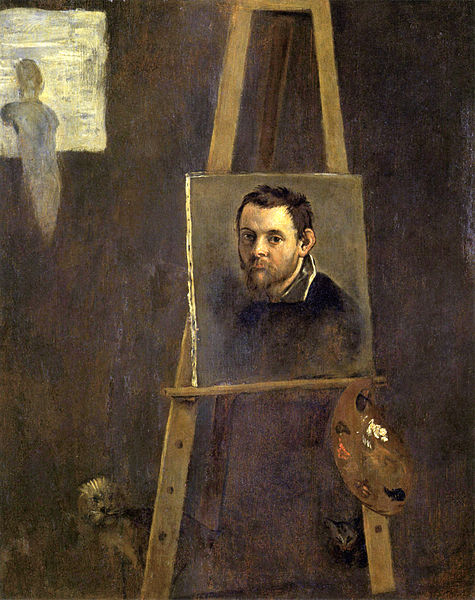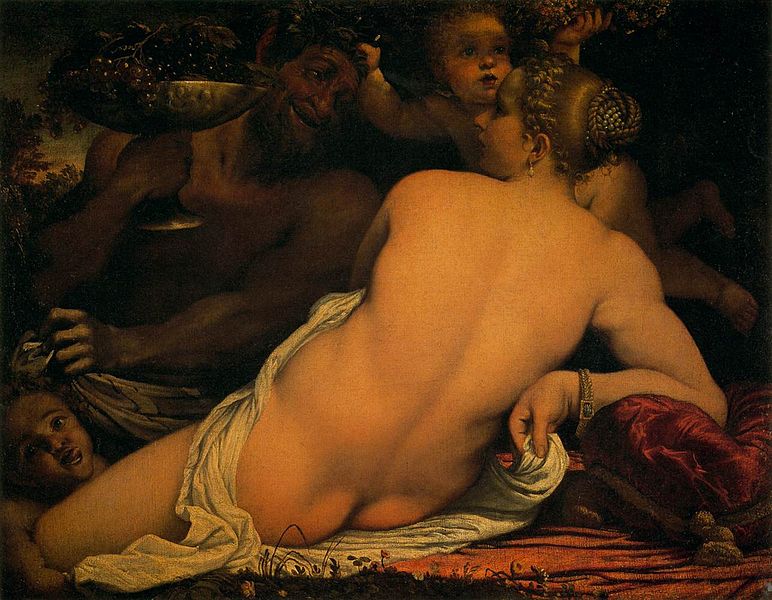<Back to Index>
- Painter Ludovico Carracci, 1555
- Painter Annibale Carracci, 1560
PAGE SPONSOR
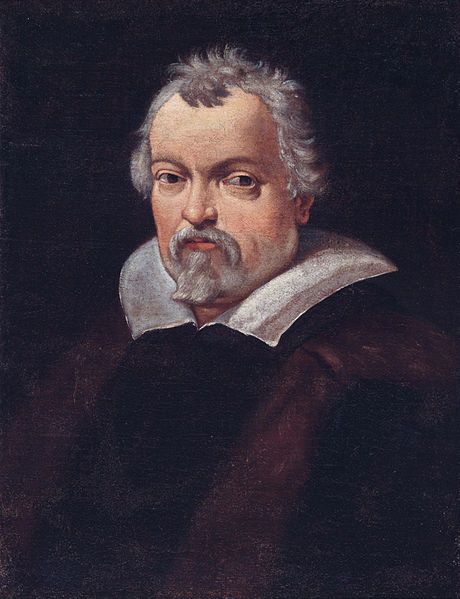
Ludovico (or Lodovico) Carracci (21 April 1555 – 13 November 1619) was an Italian, early Baroque painter, etcher, and printmaker born in Bologna.
Ludovico apprenticed under Prospero Fontana in Bologna and traveled to Florence, Parma, and Venice, before returning to his hometown. Along with his cousins Annibale and Agostino Carracci, Ludovico in 1585 was a founder and director (caposindaco) of the so-called Eclectic Academy of painting (also called the Accademia degli Incamminati), which in reality was a studio with apprenticed assistants. This studio however propelled a number of Emilian artists to preeminence in Rome and elsewhere, and singularly helped encourage the so-called Bolognese School of the late 16th century, which included Albani, Guercino, Sacchi, Reni, Lanfranco and Domenichino. The Carracci had their apprentices draw studies focused on observation of nature and natural poses, and use a bold scale in drawing figures. One of Ludovico's main pupils was Giacomo Cavedone and Francesco Camullo.
The Carracci are credited with reinvigorating Italian art, especially fresco art, which was subsumed with formalistic Mannerism.
Carracci's own works are characterized by a strong mood invoked by broad gestures and flickering light that create spiritual emotion.
Ludovico Carracci died in Bologna in 1619.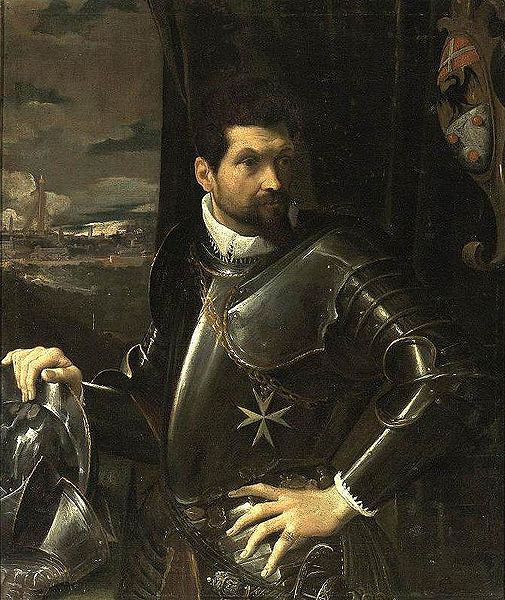
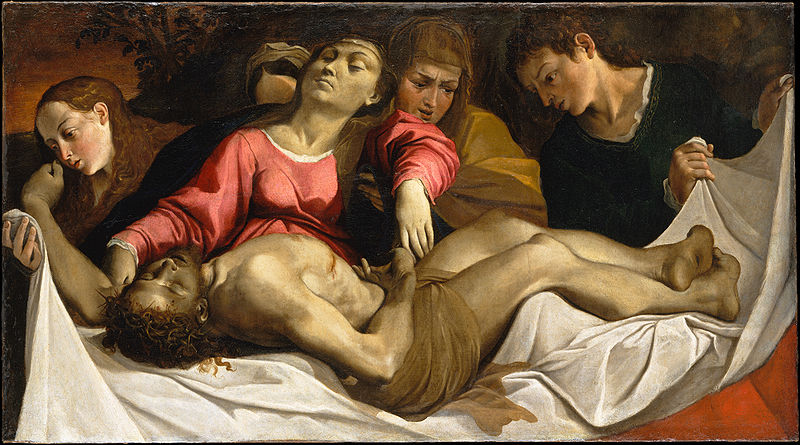
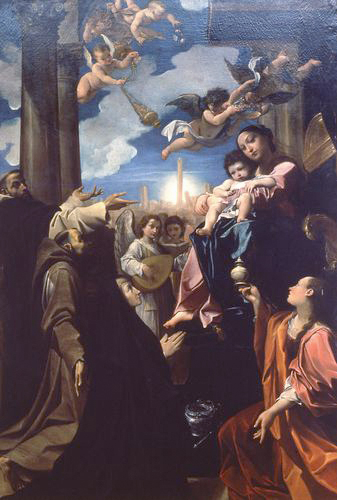
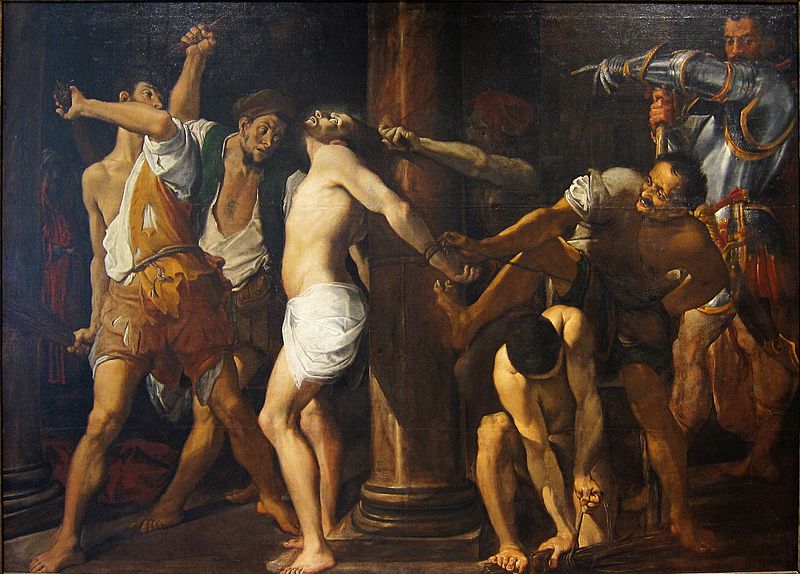
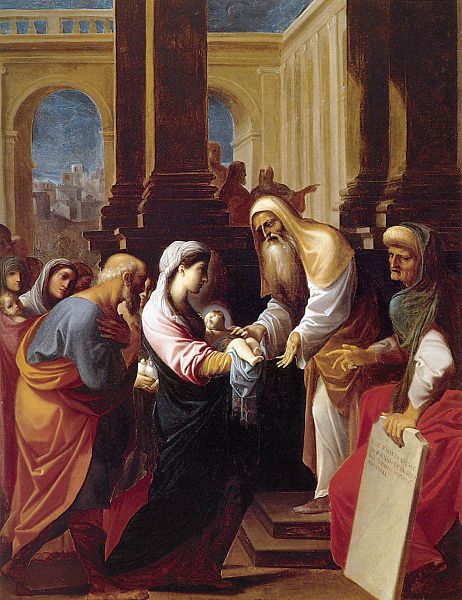
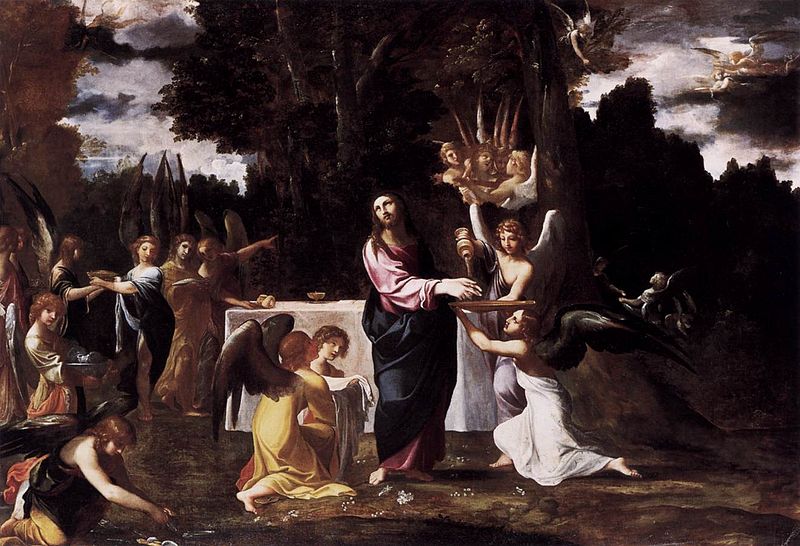

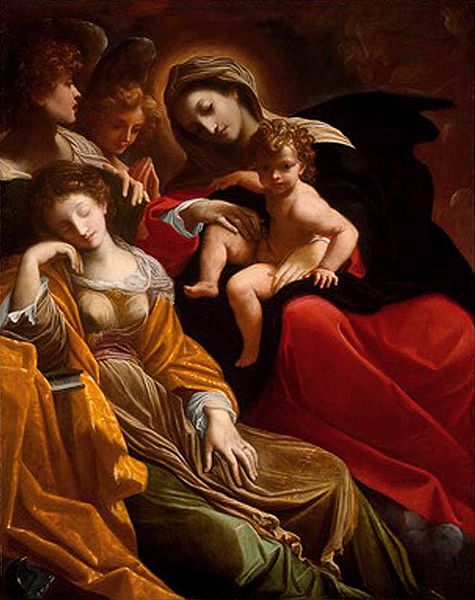
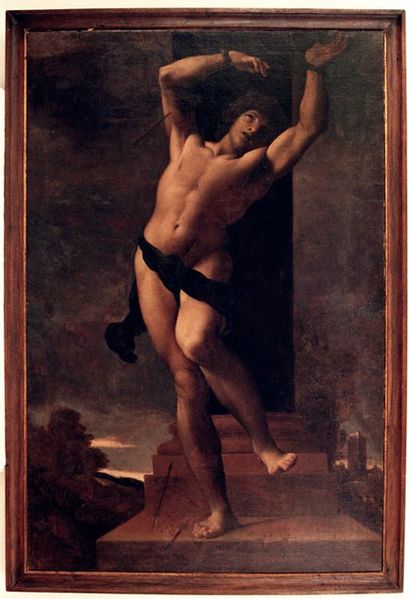
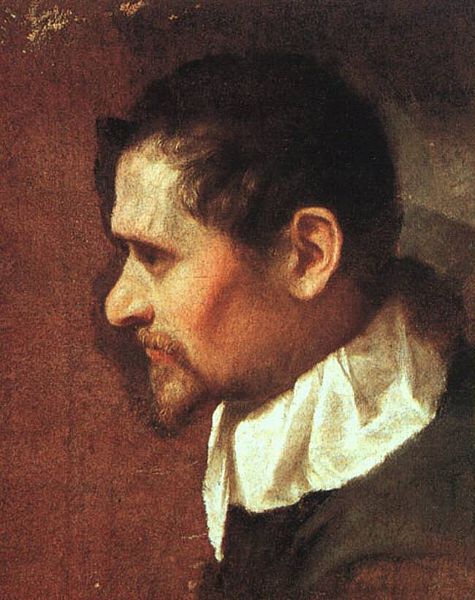
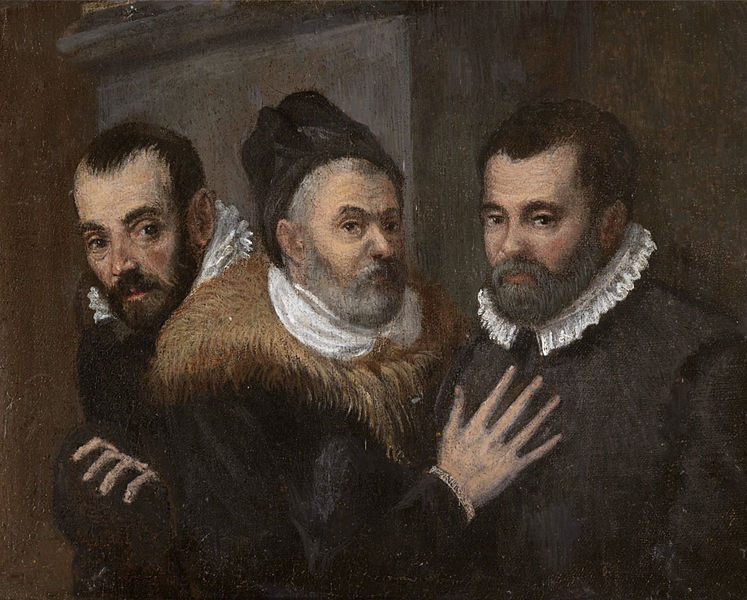
Annibale Carracci (November 3, 1560 – July 15, 1609) was an Italian Baroque painter.
Annibale Carracci was born in Bologna, and in all likelihood first apprenticed within his family. In 1582, Annibale, his brother Agostino, and his cousin Ludovico Carracci opened a painters' studio, initially called by some the Academy of the Desiderosi (desirous of fame and learning) and subsequently the Incamminati (progressives; literally "of those opening a new way"). While the Carraccis laid emphasis on the typically Florentine linear draftsmanship, as exemplified by Raphael and Andrea del Sarto, their interest in the glimmering colors and mistier edges of objects derived from the Venetian painters, notably the works of Venetian Oil Painter Titian, which Annibale and Agostino studied during their travels around Italy in 1580 - 81 at the behest of the elder Caracci Lodovico. This eclecticism was to become the defining trait of the artists of the Baroque Emilian or Bolognese School.
In many early Bolognese works by the Carraccis, it is difficult to distinguish the individual contributions made by each. For example, the frescoes on the story of Jason for Palazzo Fava in Bologna (c. 1583 - 84) are signed Carracci, which suggests that they all contributed. In 1585, Annibale completed an altarpiece of the Baptism of Christ for the church of San Gregorio in Bologna. In 1587, he painted the Assumption for the church of San Rocco in Reggio Emilia.
In 1587 - 88, Annibale is known to have had traveled to Parma and then
Venice, where he joined his brother Agostino. From 1589 - 92, the three
Carraccis completed the frescoes on the Founding of Rome for Palazzo Magnani in Bologna. By 1593, Annibale had completed an altarpiece, Virgin on the throne with St John and St Catherine, in collaboration with Lucio Massari. His Resurrection of Christ also dates from 1593. In 1592, he painted an Assumption for the Bonasoni chapel in San Francesco. During 1593 - 1594, all three Carraccis were working on frescoes in Palazzo Sampieri in Bologna.
Based on the prolific and masterful frescoes by the Carracci in Bologna, Annibale was recommended by the Duke of Parma, Ranuccio I Farnese, to his brother, the Cardinal Odoardo Farnese, who wished to decorate the piano nobile of the cavernous Roman Palazzo Farnese. In November – December of 1595, Annibale and Agostino traveled to Rome to begin decorating the Camerino with stories of Hercules, appropriate since the room housed the famous Greco - Roman antique sculpture of the hypermuscular Farnese Hercules.
Annibale meanwhile developed hundreds of preparatory sketches for the major product, wherein he led a team painting frescoes on the ceiling of the grand salon with the secular quadri riportati of The Loves of the Gods, or as the biographer Giovanni Bellori described it, Human Love governed by Celestial Love. Although the ceiling is riotously rich in illusionistic elements, the narratives are framed in the restrained classicism of High Renaissance decoration, drawing inspiration from, yet more immediate and intimate, than Michelangelo's Sistine Ceiling as well as Raphael's Vatican Logge and Villa Farnesina frescoes. His work would later inspire the untrammeled stream of Baroque illusionism and energy that would emerge in the grand frescoes of Cortona, Lanfranco, and in later decades Andrea Pozzo and Gaulli.
Throughout 17th and 18th centuries, the Farnese Ceiling was
considered the unrivaled masterpiece of fresco painting for its age.
They were not only seen as a pattern book of heroic figure design, but
also as a model of technical procedure; Annibale’s hundreds of
preparatory drawings for the ceiling became a fundamental step in
composing any ambitious history painting.
The 17th century critic Giovanni Bellori, in his survey titled Idea, praised Carracci as the paragon of Italian painters, who had fostered a “renaissance” of the great tradition of Raphael and Michelangelo. On the other hand, while admitting Caravaggio's talents as a painter, Bellori deplored his over-naturalistic style, if not his turbulent morals and persona. He thus viewed the Caravaggisti styles with the same gloomy dismay. Painters were urged to depict the Platonic ideal of beauty, not Roman street walkers. Yet Carracci and Caravaggio patrons and pupils did not all fall into irreconcilable camps. Contemporary patrons, such as Marquess Vincenzo Giustiniani, found both showed excellence in maniera and modeling.
In our century, observers have warmed to the rebel myth of Caravaggio, and often ignore the profound influence on art that Carracci had. Caravaggio almost never worked in fresco, regarded as the test of a great painter's mettle. On the other hand, Carracci's best works are in fresco. Thus the somber canvases of Caravaggio, with benighted backgrounds, are suited to the contemplative altars, and not to well lit walls or ceilings such as this one in the Farnese. Wittkower was surprised that a Farnese cardinal surrounded himself with frescoes of libidinous themes, indicative of a "considerable relaxation of counter reformatory morality". This thematic choice suggests Carracci may have been more rebellious relative to the often solemn religious passion of Caravaggio's canvases. Wittkower states Carracci's "frescoes convey the impression of a tremendous joie de vivre, a new blossoming of vitality and of an energy long repressed".
Today, unfortunately, most connoisseurs making the pilgrimage to the Cerasi Chapel in Santa Maria del Popolo would ignore Carracci’s Assumption of the Virgin altarpiece (1600 – 1601) and focus on the stunning flanking Caravaggio works. It is instructive to compare Carracci's Assumption with Caravaggio's Death of the Virgin. Among early contemporaries, Carracci would have been an innovator. He re-enlivened Michelangelo's visual fresco vocabulary, and posited a muscular and vivaciously brilliant pictorial landscape, which had been becoming progressively crippled into a Mannerist tangle. While Michelangelo could bend and contort the body into all the possible perspectives, Carracci in the Farnese frescoes had shown how it could dance. The "ceiling" frontiers, the wide expanses of walls to be frescoed would, for the next decades, be thronged by the monumental brilliance of the Carracci followers, and not Caravaggio's followers.
In the following century, it was not the admirers of Caravaggio who would have dismissed Carracci, but to a lesser extent than Bernini
and Cortona, baroque art in general came under criticism from
neoclassic critics such as Winckelmann and even later from the prudish
John Ruskin.
Carracci in part was spared opprobrium because he was seen as an
emulator of the highly admired Raphael, and in the Farnese frescoes,
attentive to the proper themes such as those of antique mythology.
On July 8, 1595, Annibale completed the painting of San Rocco distributing alms, now in Dresden Gemäldegalerie. Other significant late works painted by Carracci in Rome include Domine, Quo Vadis? (c. 1602), which reveals a striking economy in figure composition and a force and precision of gesture that influenced on Poussin and through him, the language of gesture in painting.
Carracci was remarkably eclectic in thematic, painting landscapes, genre scenes, and portraits, including a series of self portraits across the ages. He was one of the first Italian painters to paint a canvas wherein landscape took priority over figures, such as his masterful The Flight into Egypt; this is a genre in which he was followed by Domenichino (his favorite pupil) and Claude Lorraine.
Carracci's art also had a less formal side that comes out in his
caricatures (he is generally credited with inventing the form) and in
his early genre paintings, which are remarkable for their lively
observation and free handling and his painting of The Beaneater. He is described by biographers as inattentive to dress, obsessed with work: his self portraits vary in his depiction.
It is not clear how much work Annibale completed after finishing the major gallery in the Palazzo Farnese. In 1606, Annibale signed a Madonna of the bowl. However, in a letter from April 1606, Cardinal Odoardo Farnese bemoans that a "heavy melancholic humor" prevented Annibale from painting for him. Throughout 1607, Annibale was unable to complete a commission for the Duke of Modena of a Nativity. There is a note from 1608, where in Annibale stipulates to a pupil that he will spend at least two hours a day in his studio.
There is little documentation from the man or time to explain why his brush was stilled. Speculation abounds.
In 1609, Annibale died and was buried, according to his wish, near
Raphael in the Pantheon of Rome. It is a measure of his achievement that
artists as diverse as Bernini, Poussin, and Rubens
praised his work. Many of his assistants or pupils in projects at the
Palazzo Farnese and Herrera Chapel would become among the preeminent
artists of the next decades, including Domenichino, Francesco Albani,
Giovanni Lanfranco, Domenico Viola, Guido Reni, Sisto Badalocchio, and others.
